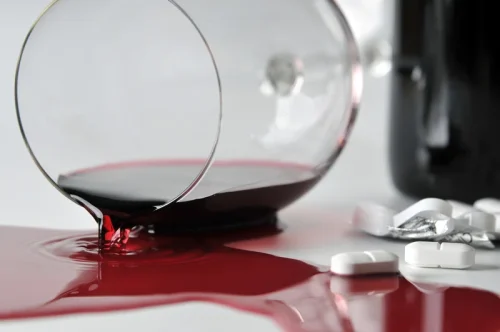The simultaneous monitoring of an EEG and hemodynamic parameters during TTT, may offer a diagnostic “goldstandard” with high levels of certainty. The diagnostic assessment of PPS should be completed with an evaluation and treatment of psychiatric comorbidity. However, it is important to emphasize that most patients hardly accept the diagnosis of CD/FND, as they are afraid that the lack of physical causes may be perceived as a sign of malingering.
Support Groups
You can support your treatment efforts with a balanced, mindful lifestyle — get plenty of rest, try to exercise, and eat nutrient-dense foods. The PTSD Coach app provides education about PTSD, a self-assessment tool, and tools to manage symptoms. Over the long term, PTSD may lead to changes in the structure of the brain, due to a decrease ptsd blackouts in size of the hippocampus — the part of the brain that helps regulate emotions and memory. Beyond the traditional symptoms of PTSD, the condition may lead to complications, especially if left untreated. In session, you will be asked to rate the intensity of the event on a scale of 1 to 10, with 10 being the most intense.
What can I expect if I have dissociative amnesia?
You may feel like happiness is impossible or that no one cares for you. The American Medical Association (AMA) clarifies that this criterion does not apply to exposure to media unless that media is work-related. Anyone at any age can get PTSD, but the symptoms listed below are most common in adolescents and adults.

Current Diagnostic Classification

Next time you experience an episode, revisit what you were feeling and thinking just before the flashback or dissociation occurred. The more early warning signs you can come up with, the better able you will be to prevent future episodes. If you’re ready to find support, the Anxiety & Depression Association of America and the International Society for Traumatic Stress Studies can help you locate a mental health professional who specializes in trauma.
- Furthermore, the National Center for PTSD published research in 2017 that concluded the most common forms of “risky” behavior in people with PTSD were alcohol and drug use, drunk driving, gambling and aggression.
- Whether it’s a car that comes a little too close or a medical scare in the emergency room, that near-miss is a memorable experience.
- Because of its broad effects on the nervous system, PTSD can cause some less well-known symptoms, too, including dissociation, brain fog, and physical pain.
- Make sure that the person you bring with you is also aware of your triggers.
- Post-traumatic stress disorder symptoms may start within one month of a traumatic event, but sometimes symptoms may not appear until years after the event.
- When you drink large amounts of liquor, it overwhelms your liver.
The link between PTSD and brain fog
- During an anxiety blackout, the individual may have difficulty recalling events or experiences during that time, resulting in memory gaps or amnesia.
- Some people don’t accurately measure the alcohol when they make a BORG.
- We have investigated the neuronal circuitry that underlies reexperiencing/hyperaroused and dissociative responses in PTSD using BOLD fMRI and script-driven imagery.
- Ideally, you should see a therapist who specializes in PTSD treatment.
- Mixing alcohol and caffeine also increases the risk for high blood pressure, irregular heartbeat, and dehydration.
- Experts recommend drinking no more than one alcoholic beverage per day for women and people assigned female at birth, and no more than two drinks per day for men and those assigned male.
As treatment progresses, the goal is to reduce the emotional charge around the event to a lower number by “tapping in” a new belief. Among veterans, there is some research to suggest that playing video games can reduce symptoms of PTSD. In general, any stressful event where you feel fear, shock, horror, or helplessness can cause PTSD.
You might start worrying about something that’s been on your mind, whether it’s a big presentation at work or a conflict with a family member. You might not realize you have memory gaps until someone else asks or mentions something you should remember but can’t. Dissociative amnesia is uncommon, but experts also aren’t sure how uncommon it really is. The American Psychiatric Association estimates about 1.8% of people experience it each year worldwide. Instead, it’s a symptom with a range of possible causes, one of which can be PTSD. I was also deeply depressed and experiencing huge amounts of anxiety, refusing to go anywhere alone or go near any men that I didn’t know… I would lock my bedroom windows and barricade my bedroom door at night.
Memory is part of what makes you who you are, so it can feel upsetting or scary to suspect or realize you can’t remember certain things. If you’re feeling anxious or worried about answering that you don’t know or remember something, it’s okay to tell your provider that. Not remembering something is a symptom of dissociative amnesia and telling them can help them make the diagnosis. Experiencing trauma can affect your body and mind in various ways. If you’re living with the aftereffects of trauma, you might notice a slow, sluggish mental state known as brain fog getting in the way of your personal or work life.
- The right temporo-parietal junction (TPJ) is a further brain area in which neuroimaging studies have shown altered activity and functional connectivity in PNES 28 and other motor FND populations 29.
- Flashbacks and dissociation can be incredibly disruptive and unpredictable.
- A May 2017 study published in the Journal of Traumatic Stress found that reckless or self-destructive behavior—in this case exhibited by veterans—included substance misuse, self-harm, excessive gambling, and aggression.
- It’s most likely to happen with severe or long-term trauma, especially experiencing abuse, neglect or violence of any kind.
- Aberrant brain networks may arise from damaged neural nodes or edges 34.
- BORG stands for “blackout rage gallon.” “Blackout” means you are so drunk that you can’t remember what happened while you were drinking.
You will also resolve emotions from a traumatic time so the blackouts are even less likely to occur. In order to prevent PTSD blackouts, you need to control the PTSD as a whole. As we mentioned in Part 1 of this guide, blackouts develop because your mind is having trouble processing current thoughts and feelings. You still have not processed a traumatic event from the past, so your brain is not capable of handling certain emotions in the present. By sorting through those past emotions, you will be better equipped to handle the current ones and your mind will remain in-touch with reality.

- The American Medical Association (AMA) clarifies that this criterion does not apply to exposure to media unless that media is work-related.
- They should know how to tell when you are entering a flashback or dissociative state, and how to respond to help you.
- “Generally, if someone is having trouble with getting back to sleep after awakening at night, it’s better not to nap,” Kapur says.
- For example, if you’re experiencing PTSD due to a car accident, you might avoid the place where the accident happened or avoid driving altogether.
- Spicy foods, acidic foods, and fatty foods are particularly troublesome.
Sometimes, the memories from blackouts can be recovered, while other times, they cannot. It is also possible that blackouts can lead to problems forming new memories. Blackouts can also be due a recent traumatic event, in which case you may forget everything that happened right before or right after the event (anterograde amnesia).